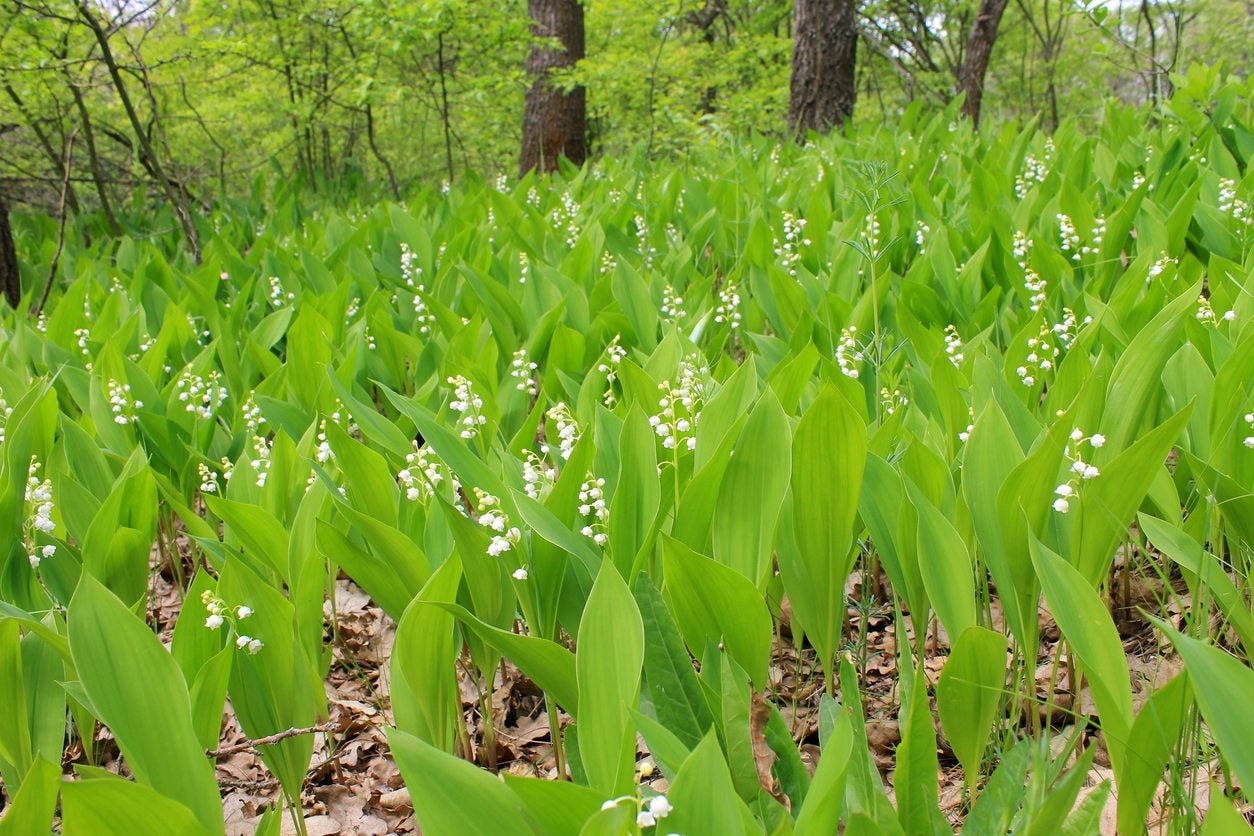How Invasive Is Lily Of the Valley: Should I Plant Lily Of The Valley Ground Cover
Lily of the valley is a perennial that grows from underground rhizomes that quickly spread horizontally. It also reproduces from seeds and can be quite invasive


Is lily of the valley invasive? Lily of the valley (Convallaria majalis) is a perennial plant that grows from stem-like underground rhizomes that spread horizontally, often with amazing speed. It also reproduces from seeds. Exactly how invasive is lily of the valley?
Should I Plant Lily of the Valley?
The lily of the valley plant has escaped cultivation and has been placed on invasive plant lists in some states, primarily for its tendency to form large colonies that threaten native plants.
It is especially happy in shady, wooded areas and doesn’t always do well in poor, dry soil or intense sunlight. In less suitable areas, it may not be invasive in the strictest sense of the word, but lily of the valley certainly has aggressive tendencies that may prompt you to think twice before planting this lovely, innocent-looking little plant. Let’s consider the pros and cons:
Controlling Lily of the Valley
While there are no guarantees with the control of this plant, the following tips may help you reign in lily of the valley’s rampant growth.
1. Dig the rhizomes with a shovel or spade. Sift the soil carefully with your hands, as even a tiny piece of rhizome will generate a new plant and eventually, a new colony.
2. If possible, cover the area with cardboard to block growth of any new rhizomes. Leave the cover in place for at least six months.
3. Cover the area with mulch if you want to camouflage the cardboard.
Sign up for the Gardening Know How newsletter today and receive a free copy of our e-book "How to Grow Delicious Tomatoes".
4. Mow the plants frequently to prevent development of seeds. This is a good way to deal with lily of the valley in your lawn.
5. Consider growing the plant in containers
6. As a last resort, control the plants with an organic herbicide. Talk with your local extension service agent about which product is the safest for the environment and health.
Note: All parts of lily of the valley are toxic and may irritate the skin. Always wear gloves when handling the rhizomes – or any part of the plant.

A Credentialed Garden Writer, Mary H. Dyer was with Gardening Know How in the very beginning, publishing articles as early as 2007.